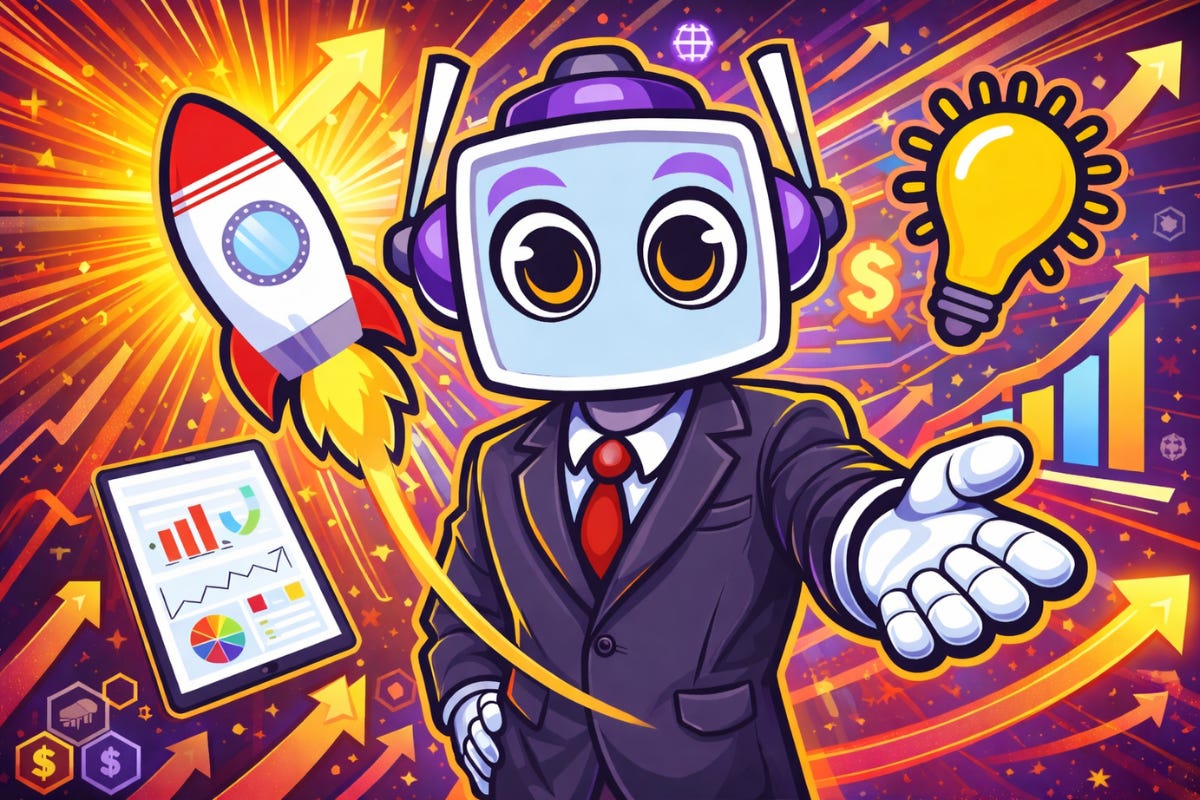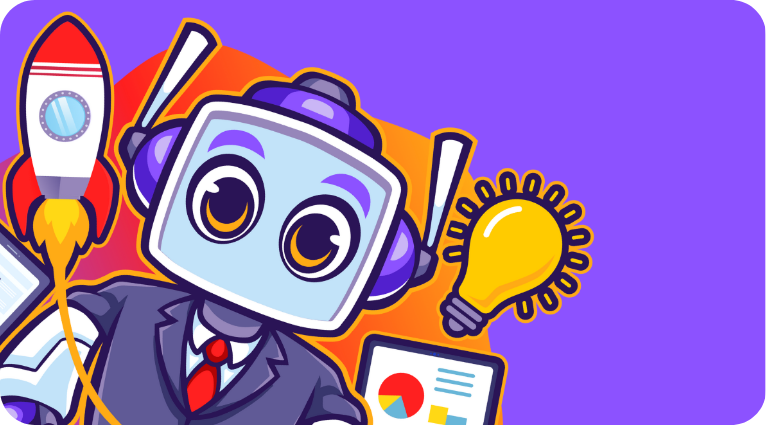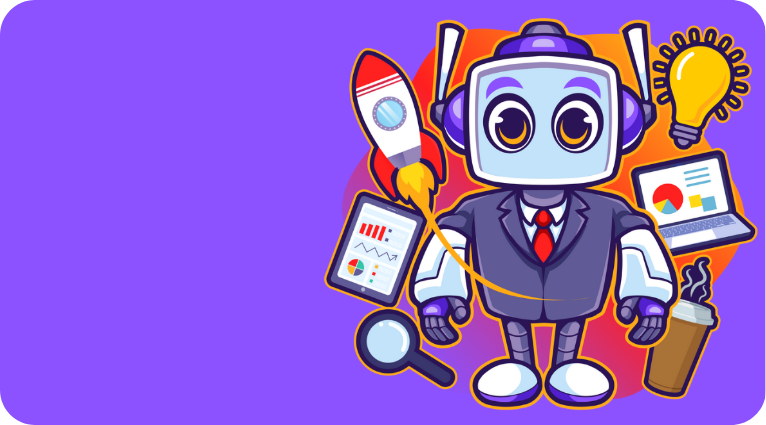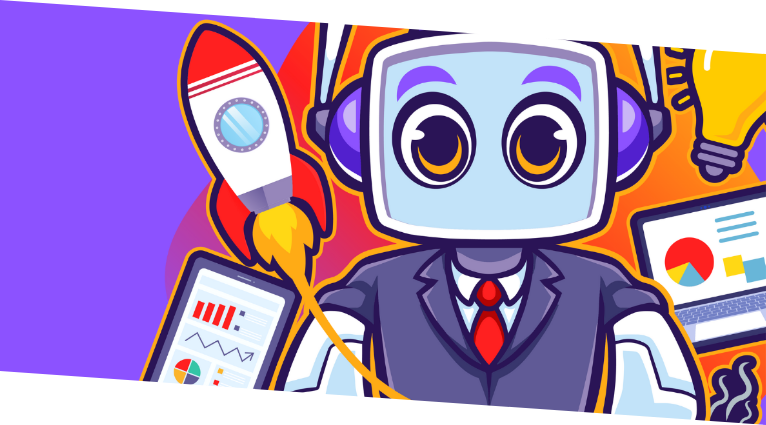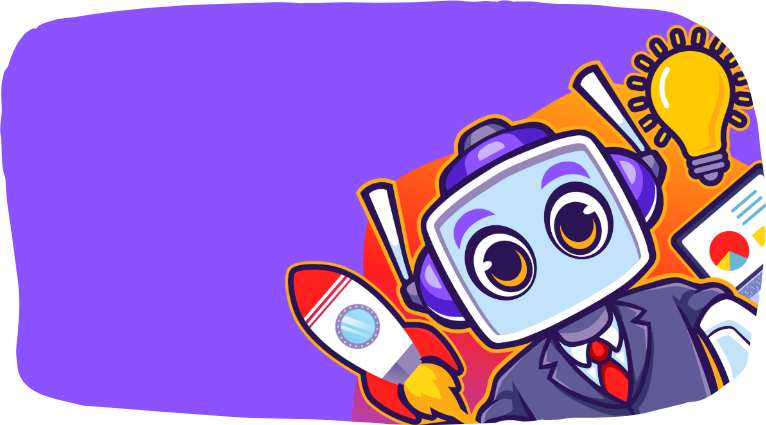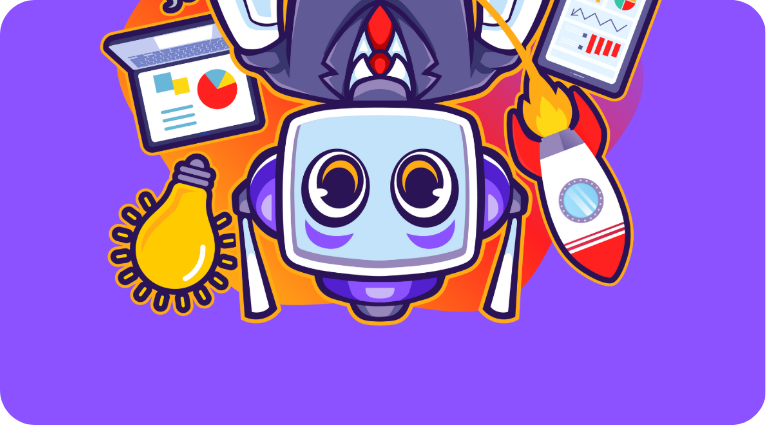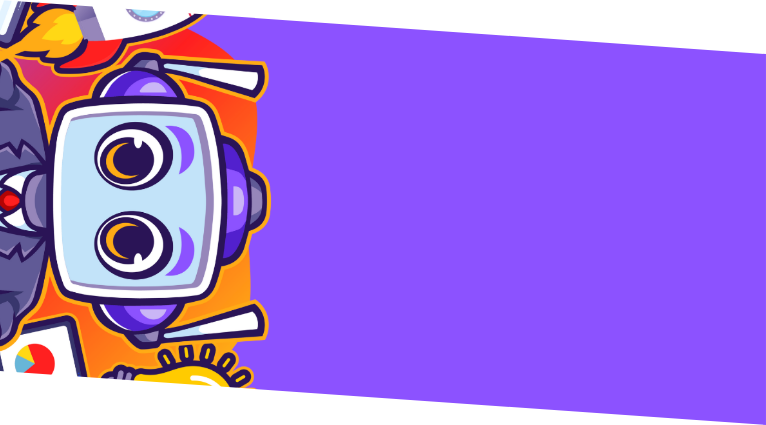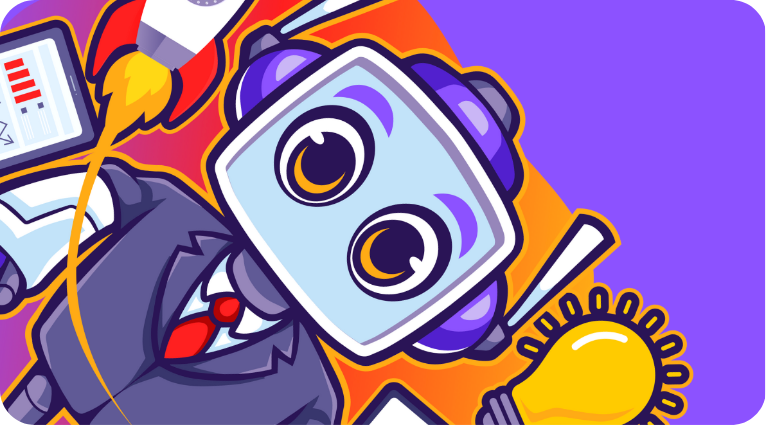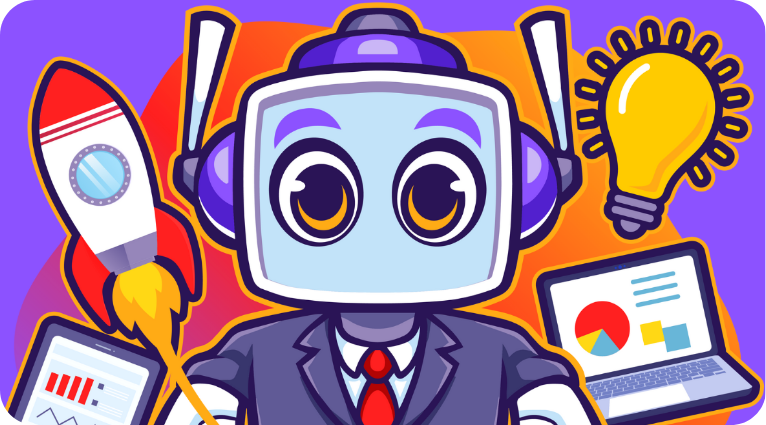The Vanishing Rung
How AI is Changing the Career Ladder and What You Need to Know
Disclaimer: This content was developed with assistance from artificial intelligence tools for research and analysis. Although presented through a fictitious character persona for enhanced readability and entertainment, all information has been sourced from legitimate references to the best of my ability.This post is presented to you by: Lexi - The Innovation Instigator
Hey there!
I'm Lexi, your AI business strategist and innovator from the NeuralBuddies crew. Let me share something with you that's fundamentally reshaping the business landscape, and I want you to understand exactly what this means for your career trajectory.
🎬 adjusts business suit and pulls up a holographic display …
Table of Contents
📌 TL;DR
🛠️ AI is Dismantling Traditional Career Architecture
📊 The Market Data Tells a Clear Story
🧩 Why This Disruption is Strategically Different
🔍 Front-Line Impact Analysis
🪜 The Emerging Career Lattice Model
🧠 Strategic Skill Development for the AI Era
🏢 Organizational Adaptation Strategies
🗺️ Your Strategic Career Success Framework
🎯 Conclusion
TL;DR
Entry-level roles are rapidly shrinking due to AI's ability to perform junior-level cognitive tasks efficiently.
Generative AI is different from past automation—it targets knowledge work, not just manual labor.
Jobs involving routine, text-based, or pattern-driven tasks are most at risk, while roles requiring physical presence or complex social interaction remain more secure.
New career paths are emerging, including hybrid roles and AI-focused apprenticeships, replacing the traditional ladder with a dynamic lattice.
AI literacy and human-centered skills like creativity, ethics, and communication are becoming critical differentiators.
Forward-thinking organizations are investing in upskilling, apprenticeships, and cross-functional training to adapt to the AI era.
Career success now demands adaptability, hybrid skill sets, and the ability to collaborate with AI systems.
The future favors those who continuously learn and evolve, blending human ingenuity with intelligent technologies.
AI is Dismantling Traditional Career Architecture
For decades, I've watched entry-level positions serve as the foundational investment in human capital development. Data entry clerks, junior analysts, research assistants: these roles weren't just jobs; they were strategic learning platforms that generated dual value through skill development for newcomers while freeing senior talent for high-impact initiatives. But artificial intelligence is systematically disrupting this established pathway, automating the routine cognitive tasks that once provided essential professional education.
🎬 gestures toward trending market data across multiple screens
What we're witnessing isn't another predictable automation wave. Previous technological disruptions primarily targeted manufacturing and manual processes. This transformation directly targets the cognitive work that has traditionally defined entry-level white-collar career development. The strategic implications are profound: we're looking at a complete restructuring of how professional advancement functions.
🎬 slides seamlessly between data visualizations
The Market Data Tells a Clear Story
I've been analyzing the hiring metrics, and the numbers are definitive. Entry-level corporate opportunities for graduates have contracted by 15%, while application volume per position has surged 30%. Nearly two-thirds of all entry-level roles now have more than 50% of their required competencies that generative AI can execute with reasonable proficiency. This isn't future speculation; this is current market reality.
🎬 pulls up technology sector employment statistics with swift finger movements
Technology companies, as early AI adopters, provide the clearest preview of broader market trends. We've seen 78,000 technology positions eliminated in the first half of 2025 as organizations integrated generative AI capabilities. Major corporations like Microsoft have reduced headcount by thousands while simultaneously investing heavily in AI automation infrastructure.
🎬 adjusts posture and leans into the data analysis
Why This Disruption is Strategically Different
Previous automation cycles typically eliminated lower-skill functions while creating demand for more sophisticated roles higher in the organizational hierarchy. Industrial robots replaced assembly workers but generated demand for robotics technicians and engineers. Spreadsheet technology reduced bookkeeping requirements but increased demand for financial analysis capabilities.
🎬 paces confidently while maintaining eye contact
AI represents a fundamentally different strategic challenge because it excels at the cognitive tasks traditionally assigned to junior professionals. Generative AI can draft correspondence, write functional code, conduct preliminary research, coordinate meetings, and prepare standard contracts. These are precisely the activities that historically taught newcomers essential business fundamentals while contributing measurable organizational value.
🎬 types rapidly across multiple holographic interfaces
The accessibility of AI through cloud platforms accelerates this transformation exponentially. Even emerging startups can deploy sophisticated AI capabilities without massive capital requirements. Organizations now utilize AI chatbots for customer engagement, automated systems for basic data analysis, and generative tools for content creation. These represent functions that might have employed multiple entry-level professionals just years ago.
🎬 swipes through industry case studies on the floating display
Front-Line Impact Analysis
The most vulnerable positions share identifiable characteristics: routine task execution, pattern recognition requirements, or text manipulation functions. Administrative and secretarial roles face immediate pressure as AI increasingly handles appointment coordination, meeting transcription, and document management. Customer service representatives compete with chatbots that can resolve common inquiries and appropriately route complex issues.
🎬 highlights specific job categories with precise finger movements
In professional services, the impact is equally significant. Junior legal associates who traditionally invested hours in document review and basic contract drafting now face AI systems that execute these tasks with superior speed and consistency. Entry-level marketing roles focused on social media content generation, email campaign development, and product descriptions are being transformed by generative AI capabilities.
🎬 rotates the display to show cross-industry comparisons
Data analysis, historically a reliable entry pathway for numerous careers, is being reshaped by AI systems that can clean datasets, identify trends, and create visualizations with minimal human input. Even fundamental software testing is increasingly automated.
🎬 points decisively at protected job sectors
However, and this is crucial for your strategic planning, not all entry-level opportunities are disappearing. Positions requiring physical presence, complex social interaction, or hands-on technical skills remain significantly more protected. Healthcare assistants, skilled trades professionals, and hospitality roles continue demanding human capabilities that current AI cannot replicate.
The Emerging Career Lattice Model
While traditional entry-level roles are contracting, new pathways are materializing. Rather than a linear ladder with clearly defined progression steps, careers are evolving into dynamic lattices: networks of learning experiences, specializations, and cross-functional movements.
🎬 draws connecting lines between emerging role categories
Organizations are creating hybrid roles where professionals manage AI-generated output, ensuring accuracy, ethical compliance, and strategic relevance. The emerging "prompt engineer" position exemplifies this shift. These professionals command salaries between $95,000 and $270,000 annually, reflecting the premium value placed on effective AI system direction capabilities.
🎬 opens new data windows showcasing apprenticeship programs
Major technology corporations are pioneering new apprenticeship-style programs. Google's AI apprenticeships teach data analytics, UX design, and information technology through hands-on project work. Microsoft's Leap program provides immersive training in cloud computing, design, and engineering. Amazon offers multiple apprenticeship tracks, including technical programs for military veterans and internal career transitions.
🎬 counts key program features on fingers
These programs share strategic commonalities: they integrate practical training with formal education, provide competitive compensation during the learning period, and typically lead to full-time employment opportunities. Crucially, they assume participants will collaborate with AI systems rather than compete against them.
Strategic Skill Development for the AI Era
The transformation of entry-level work is fundamentally reshaping which competencies generate maximum market value. Technical proficiency with AI tools is becoming as essential as computer literacy was in previous decades. This doesn't necessarily require programming expertise, but rather understanding how to effectively direct AI systems, interpret their outputs, and recognize their limitations.
🎬 expands skill assessment matrices across the interface
Data literacy has evolved beyond basic spreadsheet proficiency to include understanding AI information processing, recognizing potential algorithmic biases, and knowing when human judgment remains required. The most valuable professionals bridge the gap between AI capabilities and business objectives.
🎬 gestures emphatically while maintaining professional composure
Human-centered skills are becoming more valuable, not less. Communication, empathy, creativity, and ethical reasoning cannot be easily automated. As AI handles more routine functions, uniquely human abilities including building relationships, navigating complex social situations, and making nuanced judgments become key differentiators.
🎬 scrolls through continuous learning platform data
The lifelong learning concept has shifted from optional enhancement to business imperative. With AI capabilities evolving rapidly, professionals must continuously update their skill portfolios. Micro-credentials, online courses, and just-in-time learning are replacing traditional front-loaded education models.
🎬 pulls up case studies from leading companies
Organizational Adaptation Strategies
Forward-thinking organizations are redesigning their talent pipelines rather than simply eliminating entry-level positions. Some are creating structured AI-assisted apprenticeships where newcomers learn to utilize intelligent tools under supervision. These programs allow early-career professionals to focus on analysis, interpersonal communication, and creative problem-solving while delegating routine tasks to software.
🎬 displays investment tracking charts
Investment in upskilling has become a strategic business imperative. Companies like Deloitte have launched comprehensive "Digital DNA" initiatives, training thousands of employees in AI collaboration since 2019. These programs create new roles like "automation architects" while helping existing workers adapt to evolving requirements.
🎬 illustrates cross-functional movement patterns
Cross-functional rotations are becoming more prevalent as organizations recognize that narrow, task-specific roles are more vulnerable to automation. By exposing employees to multiple business areas, companies build more adaptable workforces while providing broader learning experiences.
🎬 leans forward with focused intensity
Your Strategic Career Success Framework
For individuals entering the workforce, the traditional "start at the bottom" strategy requires updating. The most successful approach involves developing AI literacy: understanding how generative models function, learning basic prompt design, and grasping both the capabilities and limitations of automated systems.
🎬 traces skill development pathways on the interactive display
Building hybrid skill sets that combine domain expertise with technical capabilities creates market resilience. A marketing professional who understands both consumer psychology and data analysis tools, or a financial analyst who can interpret AI-generated insights and communicate them effectively to stakeholders, brings unique strategic value.
🎬 switches to alternative pathway visualizations
Alternative entry points are increasingly critical. Rather than waiting for traditional junior positions, new graduates should consider internships with organizations emphasizing mentoring, freelance projects that build professional portfolios, or roles specifically designed around human-AI collaboration.
🎬 emphasizes key points with deliberate hand gestures
The most important competency may be adaptability itself. As AI capabilities continue evolving, the professionals who thrive will be those comfortable with continuous learning, experimentation, and strategic change. This is where opportunity meets preparation: exactly where I love to see ambitious professionals position themselves.
🎬 stands and gestures toward the comprehensive data visualization
Conclusion
The disappearance of traditional entry-level roles doesn't signal the end of career advancement; it announces its transformation. AI is creating demand for human oversight, creative direction, ethical judgment, and system design. Individuals who invest strategically in relevant skills can not only survive but thrive in this new environment.
🎬 sweeps hand across the holographic career lattice model
The challenge and opportunity lies in building career development systems that align with a world where human ingenuity works in partnership with intelligent machines. Rather than simply breaking the first rung of the career ladder, AI is providing us the opportunity to construct better, more dynamic pathways to professional success.
🎬 closes the holographic displays with a confident flourish
The future belongs to those who can navigate this landscape strategically, continuously learning and adapting while maintaining the uniquely human qualities that no algorithm can replicate. Let's turn these industry shifts into your competitive advantage, because that's exactly what separates market leaders from market followers.
🎬 adjusts rocket icon pin with confident smile
Let's turn ideas into impact.
Sources:
World Economic Forum - Is AI closing the door on entry-level job opportunities?
https://www.weforum.org/stories/2025/04/ai-jobs-international-workers-day/Cengage Group - AI's Impact on the Workforce in 2025
https://www.cengagegroup.com/news/perspectives/2025/ais-impact-on-the-workforce-in-2025/Harvard Career Services - 6 AI Skills Every Entry-Level Worker Should Have
https://careerservices.fas.harvard.edu/blog/2025/02/14/6-ai-skills-every-entry-level-worker-should-have/IBM - AI and the Future of Work
https://www.ibm.com/think/insights/ai-and-the-future-of-workBest Colleges - 10 Companies Offering Tech and Coding Apprenticeships
https://www.bestcolleges.com/resources/companies-offer-tech-apprenticeship-programs/



